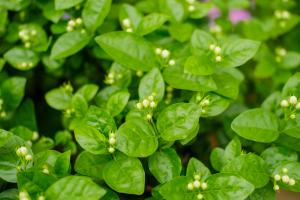How to Plant Areca Nut Trees
Areca nut trees, also known as betel nut trees, are popular in Asia and parts of Africa for their nut-like fruit. They are relatively easy to grow, and their fruit is used for medicinal and recreational purposes. If you’re interested in planting areca nut trees, here’s what you need to know:
Choose the Right Location
Areca nut trees require warm, tropical climates to grow properly. They prefer temperatures between 75 and 85 degrees Fahrenheit and need moist soil to thrive. When choosing a location for your tree, look for an area that gets plenty of sun with well-draining soil. Avoid areas prone to flooding or standing water.
Prepare the Soil
Before planting, prepare the soil by adding organic matter like compost, manure, or peat moss to improve drainage and nutrient content. A pH range of 6.0 to 7.5 is ideal for areca nut trees.
Planting Areca Nut Trees
Planting areca nut trees is a straightforward process that can be done in a few simple steps:
1. Dig a hole that is at least two to three times the width of the tree’s root ball and deep enough to accommodate the roots.
2. Gently loosen the roots and remove any damaged or tangled ones.
3. Place the tree in the hole, making sure the root ball is level with the soil surface.
4. Backfill the hole with soil, tamping it down lightly as you go to eliminate air pockets.
5. Water the tree thoroughly to settle the soil around the roots.
Care and Maintenance
Areca nut trees require regular watering, especially during dry seasons. Fertilize the tree with a balanced fertilizer every six months and prune it as needed to maintain a good shape and size.
Areca nut trees are susceptible to pests and diseases, including leaf spot and red spider mites. Keep the area around the tree clean and free of fallen leaves and debris to prevent disease spread, and use a pesticide if necessary to control pests.
Harvesting Areca Nuts
Areca nut trees take about three to four years to mature and start producing nuts. When the fruit turns bright red, it’s ready for harvesting. Gently twist the fruit to remove it from the tree, being careful not to damage the branches or other fruit.
After harvesting, place the fruit in a warm, dry area to dry for several days. Once they are completely dry, crack the fruit open to reveal the nut inside. Areca nuts are often chewed raw or used in various forms of medicine.
Conclusion
Areca nut trees are an interesting and useful addition to any tropical garden. By following these simple steps for planting, caring, and harvesting, you can enjoy the benefits of this fascinating tree for years to come.

 how many times do yo...
how many times do yo... how many planted tre...
how many planted tre... how many pine trees ...
how many pine trees ... how many pecan trees...
how many pecan trees... how many plants comp...
how many plants comp... how many plants can ...
how many plants can ... how many plants and ...
how many plants and ... how many pepper plan...
how many pepper plan...






























